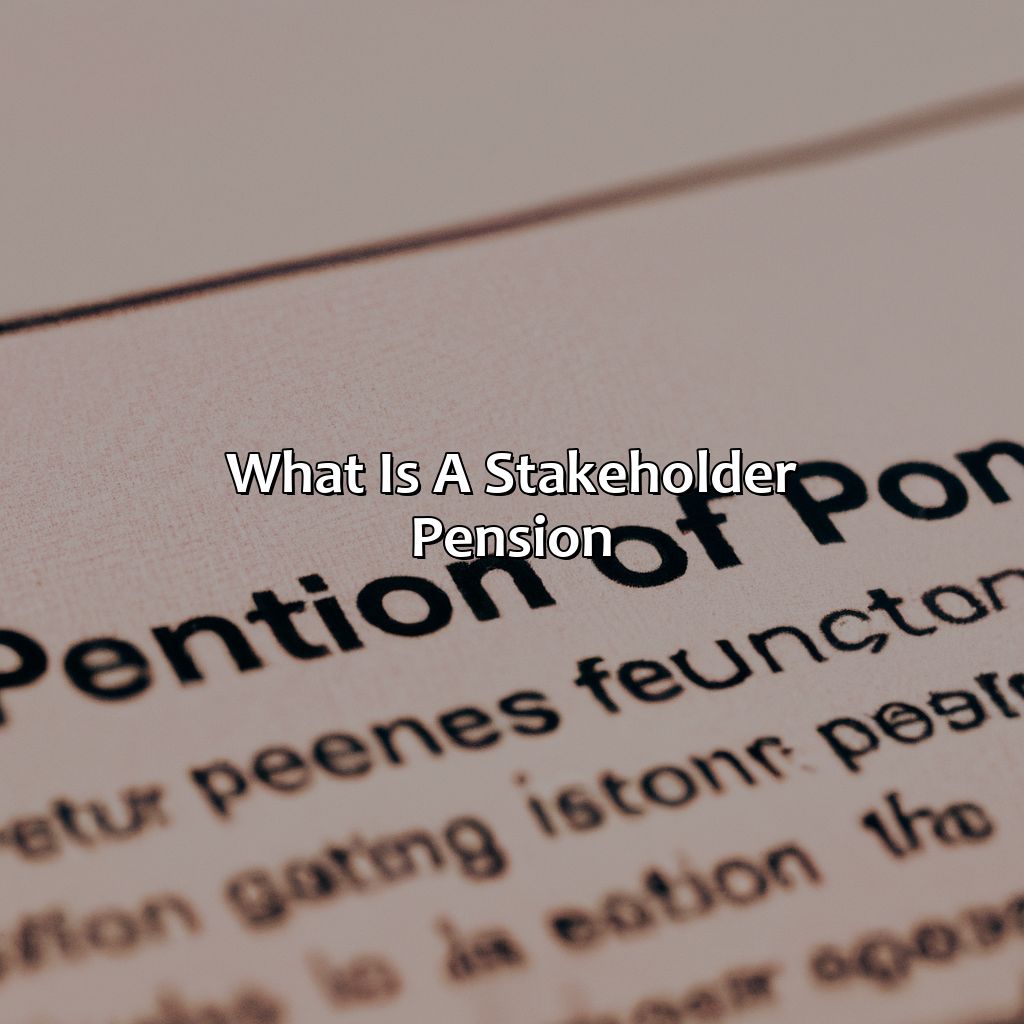What Is A Stakeholder Pension?
Key Takeaway:
- A stakeholder pension is a type of personal pension that is designed to be simple, flexible, and affordable, suitable for individuals who want to save for retirement and have control over their investments.
- Stakeholders can include anyone who has an interest in the pension, including the individual, their employer, and the pension provider. Stakeholders have a legal obligation to act in the best interests of the pension holder.
- To be eligible for a stakeholder pension, individuals must be under the age of 75 and be a UK resident. The minimum contributions are as low as 20 per month.
- One key feature of a stakeholder pension is low charges, which are capped at 1.5% for the first ten years and 1% thereafter, making them an affordable option for individuals with smaller pension pots.
- Stakeholder pensions are also flexible and accessible, allowing individuals to increase, decrease or stop contributions, switch investments, and transfer their pension to another provider without incurring penalties or fees.
- One of the major benefits of a stakeholder pension is the tax relief individuals receive on their contributions, which is added to their pension pot, making these pensions an attractive option for those who want to take advantage of tax-efficient savings.
Are you confused about stakeholder pensions, wondering what they are and whether you should get one? You’re not alone. This article will provide an insight into stakeholder pensions and the benefits they offer.
What is a Stakeholder Pension?
What is a stakeholder pension?
A stakeholder pension is a type of pension plan that is designed to be simple, flexible, and low-cost. It is a personal pension plan that is available to individuals who may not have access to a workplace pension plan. Stakeholder pensions have caps on the fees and charges that can be levied on them and a minimum contribution level of just £20.
Who benefits from a stakeholder pension?
Stakeholder pensions are beneficial for:
- Individuals who are self-employed and do not have access to a pension plan through their workplace.
- Individuals who work for companies that do not offer a pension plan.
- Individuals who want to supplement their existing pension plan.
- Investors who are looking for a low-cost, flexible pension plan.
By investing in a stakeholder pension plan, stakeholders can enjoy benefits such as tax relief on their contributions, the ability to transfer their plan to another provider without incurring penalties, and the option to take up to 25% of their pension pot tax-free when they reach retirement age.
Therefore, anyone who falls into any of the categories mentioned above should consider investing in a stakeholder pension in order to enjoy these benefits and reap the rewards.
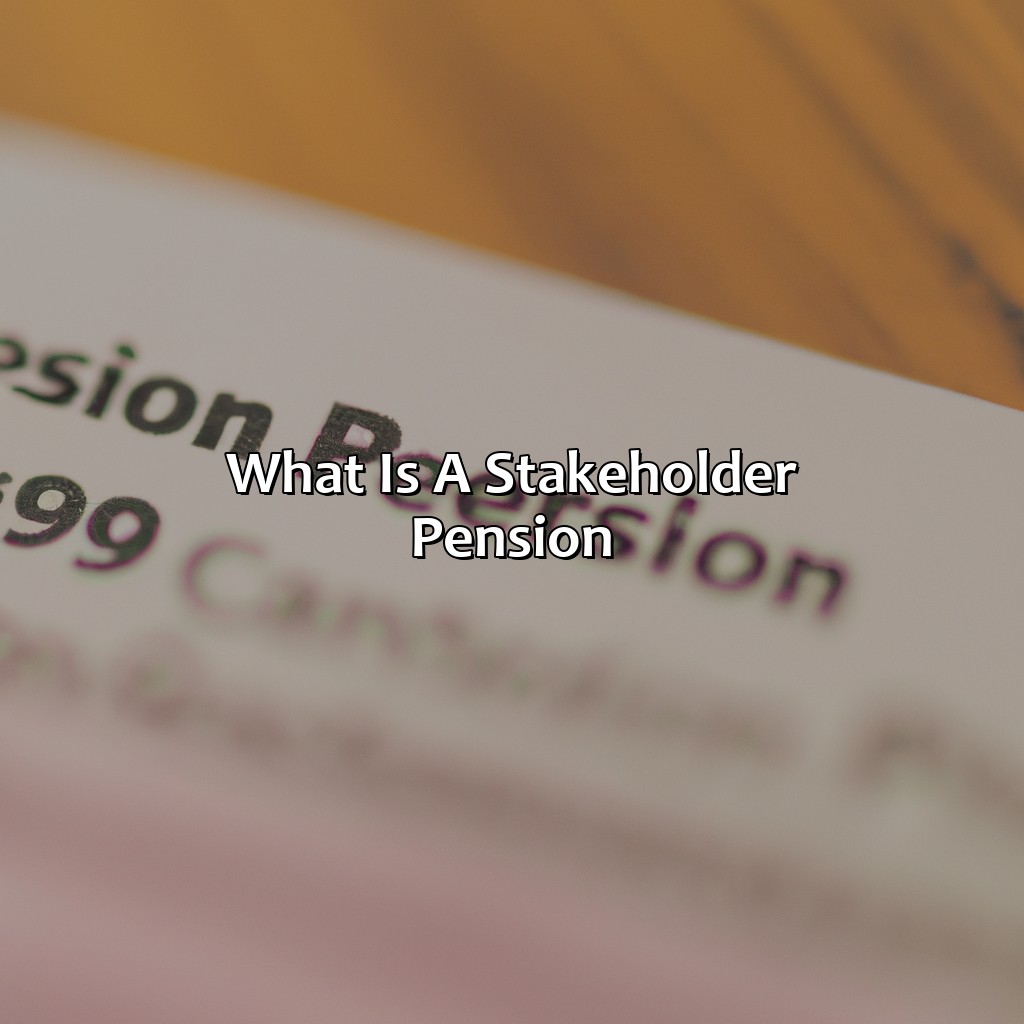
Image credits: retiregenz.com by Joel Duncun
Definition of a Stakeholder Pension
A stakeholder pension is a retirement savings plan that is accessible to anyone, including the self-employed, who wants to accumulate savings for their future. These pensions are flexible and have low fees. They allow contributors to invest monthly or annually, with payments set in advance. Stakeholder pensions were established by the government in 2001 as a cost-effective way of saving for retirement.
One notable aspect of stakeholder pensions is that contributions can be made by an employer or individual without affecting their entitlement to other pension arrangements. The employee has complete control over how much they pay into the scheme and how their contributions are invested. These types of pensions are usually managed by a team of experts who choose different assets like bonds, stocks, and property on behalf of contributors. To know more about the stock market owned by pension funds, visit What Percentage Of The Stock Market Is Owned By Pension Funds?
If you are wondering which of the following IRAs provides a pension for employees, then stakeholder pensions are a great option to consider. Contributions can be made by both the employer and employee, giving the employee complete control over their contributions and investment choices.
Stakeholder pensions provide various benefits, including tax relief on contributions up to specific limits, diversity in investment options and flexibility in accessing income after retirement. There are also minimum levels that ought to be paid into a scheme each year, making it more widely available for individuals who cannot afford large investments.
Jasmine was a nurse working at the hospital for over six years before changing employers; she left behind her occupational pension in this new role. She seized the opportunity and chose to join a stakeholder pension scheme which allowed her regular contributions towards her retirement while accommodating her needs with a flexible savings plan.
Why be a mere bystander when you can be a stakeholder in your own pension plan?
Who are Stakeholders?
Stakeholders refer to individuals or organizations that have an interest or concern in a business or project. These may include investors, employees, customers, suppliers, and even the community. Understanding their needs and perspectives is crucial for making informed decisions and achieving success.
To ensure a successful stakeholder relationship, it is essential to identify them early on in the project and regularly communicate with them. This can be done through meetings, reports, newsletters or online platforms. Additionally, stakeholders should be involved in the decision-making process as much as possible to increase their sense of ownership.
Not all stakeholders hold the same level of importance or influence. Thus it is essential to prioritize and evaluate their power and interest carefully. For instance, stakeholders with high power and interest are likely to require more attention than those with low power and interest levels.
To maximize stakeholder engagement, it is crucial to create strategies that align with their values while ensuring business goals are met. Employing active listening skills can help uncover valuable insights into stakeholder needs and perceptions which can help guide decision-making processes.
Even your pet goldfish is eligible for a stakeholder pension, assuming it has a bank account and can make regular contributions.
Eligibility for a Stakeholder Pension
Do you qualify for a stakeholder pension? Think age restrictions and minimum contributions. These two sections are key to your stakeholder pension eligibility.
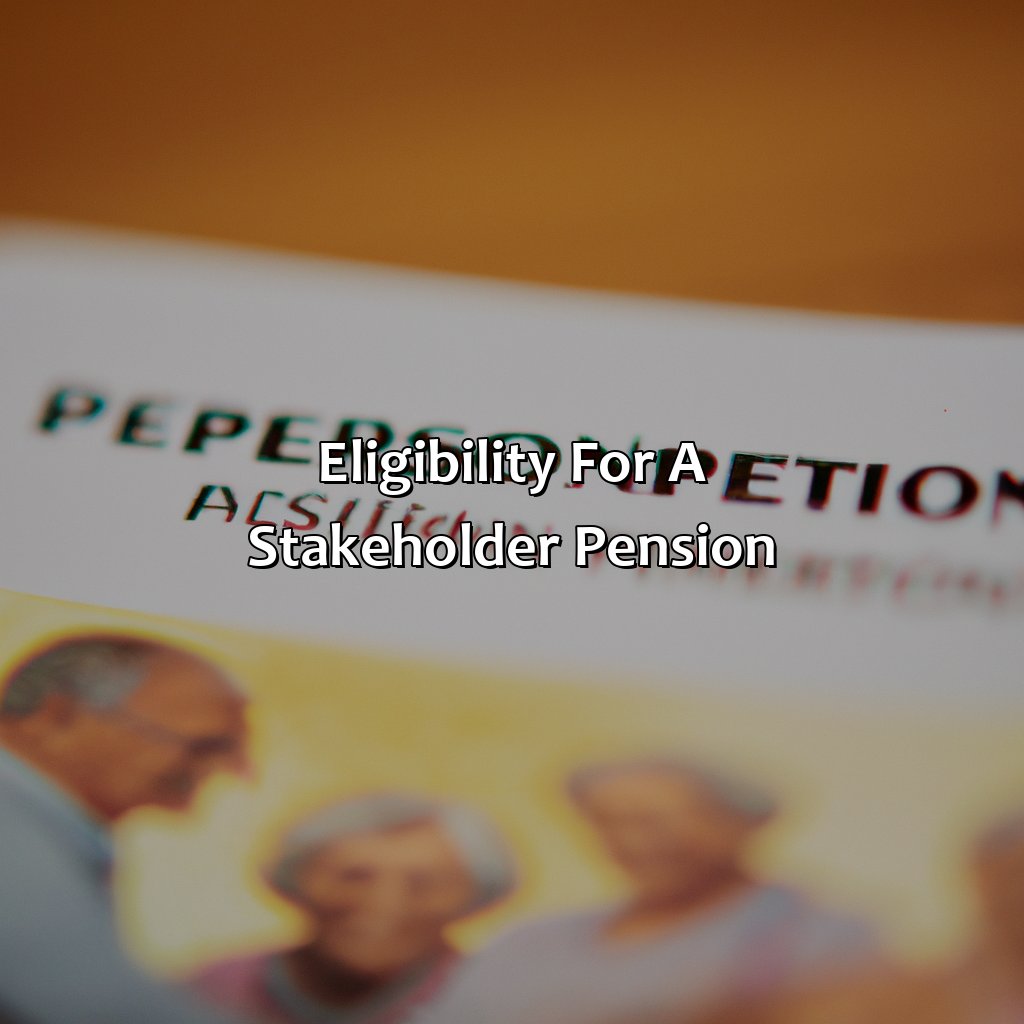
Image credits: retiregenz.com by Adam Woodhock
Age Restrictions
Stakeholder Pension Eligibility Criteria for Various Age Groups
Individuals of different age groups can participate in a stakeholder pension scheme. Stakeholder pension eligibility criteria vary depending on the age group you belong to. If you are 18 years and above, earn a salary or work for a company, self-employed, or have no source of income, then you qualify for a stakeholder pension.
To be eligible for a stakeholder plan, you should not have reached your 75th birthday. Anyone below this age can set up and contribute to this kind of plan. Additionally, there is no minimum requirement for contributions, suiting those who can only save small amounts towards their retirement.
If you are approaching your retirement age and haven’t saved enough yet, it’s never too late to start contributing to a stakeholder plan and invest in your future with peace of mind. Consider setting up one today and learn about how many pension plans are there in the US? to avoid regretting later the fear of missing out on the guaranteed benefits that come with owning this kind of scheme.
“I may not be a math whiz, but I know that the minimum contributions for a stakeholder pension definitely add up over time.”
Minimum Contributions
Contributions Guidelines in a Stakeholder Pension
A stakeholder pension scheme is an easy way to save for your retirement. It has low charges and flexible contributions. The following are the guidelines to adhere to when making contributions into a stakeholder pension scheme:
- Regular payments: You can pay into a stakeholder pension scheme as often as you wish, weekly, monthly or annually.
- Minimum contribution amounts: There is no fixed minimum amount required: this means that you could make very small contributions, providing they are affordable and regular.
- Tax relief on payments: You will get government tax relief on your contributions, even if you don’t pay tax.
- Maximum contribution limit: There is also no maximum contribution limit, but there might be a yearly allowance which is 40k p.a., however for those higher earners or additional income individuals it may be limited further.
It’s worth noting that these guidelines aren’t static but may vary over time. Make sure you stay updated with the latest contribution rules by visiting the official website of HM Revenue & Customs regularly.
An interesting incident was recounted by Dave who had not invested in his company’s stakeholder pension scheme when he joined the organization; however after speaking with one of their advisors he realised investing 5% of his salary would cost him just 25 per month while his employer put in more than double that amount – effecting significant returns for him!
Get ready to be impressed by the features of a stakeholder pension – it’s like the James Bond of retirement savings plans.
Features of a Stakeholder Pension
You must investigate the benefits of a stakeholder pension with low charges, flexibility, and accessibility. These could be what you need for retirement savings. Make sure to check out all options before deciding which pension to pick!
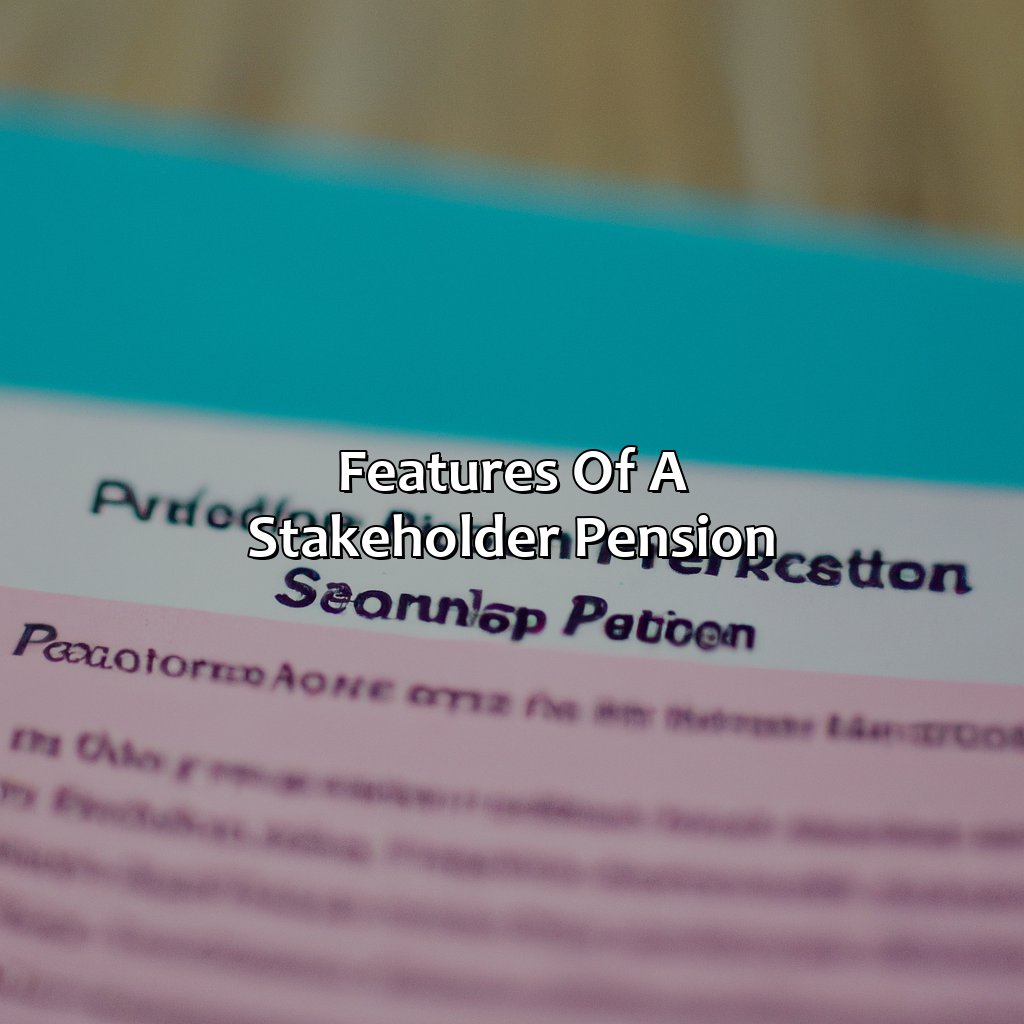
Image credits: retiregenz.com by James Jones
Low Charges
When it comes to Stakeholder Pensions, keeping charges low is essential. The cost of fees, expenses, and commissions can greatly affect the value of a pension in the long run. Therefore, having a plan with low charges can be beneficial to your retirement savings.
Having low charges on your Stakeholder Pension means that more of your money goes towards building your pension fund instead of being spent on administrative or management fees. These charges can include things such as annual management fees, initial setup fees, and exit penalty fees. A plan with low costs allows you to get more out of your contributions towards your retirement fund. Find out who manages pension funds to ensure the best investment of your retirement savings.
It’s important to compare the charges of different Stakeholder Pension providers before choosing one. Every provider has their own set of costs and fees that may differ from others. Some plans may have higher upfront costs but lower ongoing fees while others may have no setup cost but higher annual management charges – hence comparing providers is recommended.
Remember to also consider the quality of services provided by each provider in addition to the cost factor when comparing stakeholder pension plans – this involves administration efficiency, investment options (including risk diversification) and customer service offered by each provider. By considering all these factors will help you make an informed decision about which plan suits you best.
Unlike your spine, a stakeholder pension is flexible and accessible, allowing you to twist and turn your investments to suit your financial needs.
Flexibility and Accessibility
Stakeholder pensions offer great supervisory flexibility, allowing investors to adapt their plans as per their requirements. These pensions provide a range of investment choices and affordable charges with high accessibility.
Investors can modify the pension investments in terms of amount and frequency which makes it a flexible option. Accessibility covers individuals who are self-employed, contracted out and those without a consistent or stable income. Investors have keen access to track pension progress online or revise investments for free anytime.
With the advantage of duty-free savings, one can avail tax benefits on their contributions up to 100% of their salary before tax deductions. Additionally, stakeholder pensions have no exit penalties which means one can exit freely barring any significant losses allowing hassle-free withdrawal.
Pro Tip: Make sure you balance your investment deliberately and reach your monetary goals!
Who needs a sugar daddy when you can have a stakeholder pension? The benefits will last a lifetime.
Benefits of a Stakeholder Pension
Grasp the perks of a stakeholder pension with tax relief and pension credit! Learn how it can help you plan for a comfortable retirement. Contribute to a stakeholder pension to gain tax relief from the government. When you retire, you’ll get pension credit!
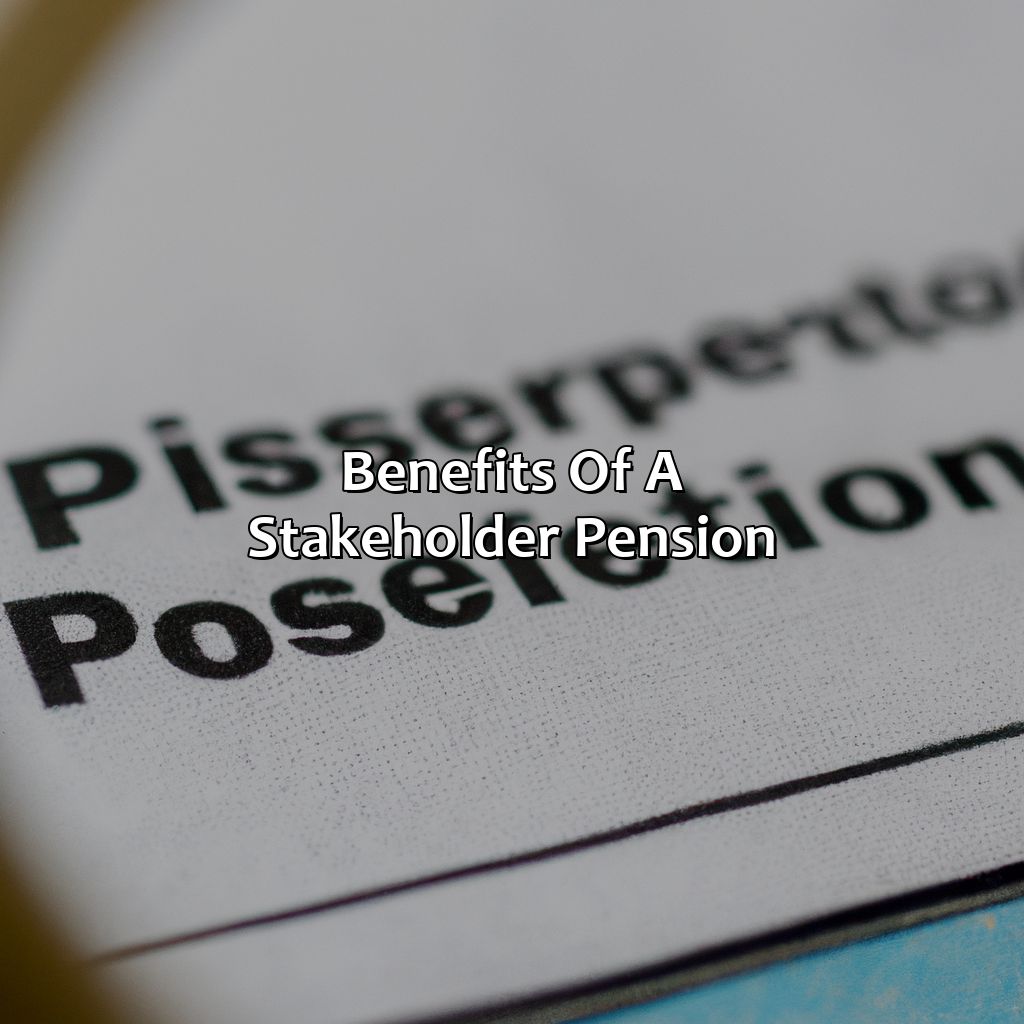
Image credits: retiregenz.com by David Jones
Tax Relief
Individuals can benefit from significant tax relief when contributing to their stakeholder pension. The government enables people to obtain relief on up to 100% of their annual earnings, subject to an annual allowance limit and age-related limits for individual cases.
Contributions made through direct debit or salary sacrifice arrangements receive immediate relief at the member’s highest income tax rate. Non-taxpayers who contribute receive basic-rate tax relief, which is then automatically added to their pension plan by the provider. Furthermore, individuals can usually carry forward any unused allowances from the previous three years’ contributions. If you’re wondering how does a pension fund work, understanding these contribution options is a good place to start.
It is essential to note that tax regulations are highly dynamic and can vary greatly depending on how an individual approaches their financial planning in terms of investing in a stakeholder pension. In some cases, the amount of government support may increase or decrease given changes in government policy and current state of the economy. For more information on pension funds, visit our website.
According to HM Revenue & Customs (HMRC), “You\’ll get tax relief on your stakeholder pension contributions up to the lower of: 100% of your earnings or 3,600.” If you’re wondering
Pension Credit – the only credit worth having when you’re old and cranky.
Pension Credit
The government’s Additional State Pension now goes by another term, which is ‘Income Related Benefit – Pension Credit’. This credit was introduced to add financial support for retired citizens having insufficient pensions or savings.
Pension Credit is a means-tested benefit administered by the UK Government’s Department of Work and Pensions. It consists of two parts: Guarantee Credit and Savings Credit. The former helps people who have reached pensionable age but whose income is below an agreed level, while the latter pays extra money to those who saved towards their retirement. If you are interested in learning more about pensions in the UK, you may want to look into what is the UK state pension and how it works.
It s worth noting that eligibility for Pension Credit has no effect on entitlement for other state benefits as it doesn’t count in calculations of Council Tax, Housing Benefits, or Help with Health Costs.
According to Citizen\’s Advice Bureau UK website “Up to 3.5 billion in Pension Credits goes unclaimed every year.” Thus proper research should be done to see if you may qualify for a
Image credits: retiregenz.com by David Jones
Choosing a Provider
When searching for a suitable provider for your stakeholder pension plan, consider certain factors. These include fees and charges, investment options available, flexibility of contributions, minimum contribution requirements and customer support.
- Compare the fees and charges associated with different providers to ensure you choose one that suits your budget.
- Check the variety of investment options offered by each provider. This helps you make an informed decision.
- Choose a provider that offers flexible contribution options, giving you the freedom to adjust your pension contributions at any time.
- Confirm the minimum contribution requirements set by different providers to avoid any misunderstandings in the future.
- Consider customer support as well. Go for a provider with excellent customer service provision to assure quick resolution of issues in case they arise.
It’s crucial to verify each detail before finalizing your pension provider choice. Choose wisely to ensure that your plan aligns with your retirement goals.
Pro Tip: Consider consulting with a financial adviser for expert guidance while choosing a stakeholder pension plan.
If you’re bad at managing money, setting up a direct debit for your stakeholder pension may be the closest thing you have to a financial therapist.
Setting up a Direct Debit
To establish automatic payments, it’s critical to obtain information on the Semantic NLP variation of ‘Setting up a Direct Debit.’ By using this mechanism, you’ll be able to arrange for withdrawals from your bank account in a timely manner with less effort.
- Research the payee’s information.
- Select ‘Direct Debit’ as your payment method. Input your required amount and how often you’d want it to leave your account utilizing the provided online form.
- To confirm the transaction was successful, look for an email or notification from the payee.
- If any modifications are necessary in the future, make sure to inform both the payee and your bank so that there are no hiccups with upcoming payments.
- Make sure there are enough funds in your bank account when payments are due to avoid incurring additional costs or potential negative impacts on credit score.
- If you need to cancel this service at any moment, contact both entities to prevent any further debits from occurring.
After setting up a Direct Debit or establishing recurring automatic payments via another means, keep track of receipts for tax reasons and personal records. It is imperative to always be aware of how much money is being withdrawn and what fees and charges there might be. In summary, setting up a Direct Debit is a simple procedure that can aid anyone who needs consistent payment management while also reducing stress associated with numerous manual transactions. Being organized may save time and surprise expenses later down the road but situational awareness with finances should still come first above anything else.
Some Facts About What Is A Stakeholder Pension:
- ✅ A stakeholder pension is a type of defined contribution pension scheme that is available to anyone, but is intended to benefit those who have not been enrolled in a pension scheme by their employer. (Source: Money Advice Service)
- ✅ The minimum contribution that must be made to a stakeholder pension is set by the government and is subject to change. (Source: The Pensions Regulator)
- ✅ Stakeholder pensions have a cap on charges and fees that providers can charge, to ensure that the scheme is affordable and accessible. (Source: Money Saving Expert)
- ✅ Funds within a stakeholder pension can be invested in a range of options, such as stocks and shares, bonds, and property. (Source: PensionBee)
- ✅ When a stakeholder pension holder reaches retirement age, they can choose to take up to 25% of their pension pot as a tax-free lump sum, with the remaining amount used to provide a regular income. (Source: GOV.UK)
FAQs about What Is A Stakeholder Pension?
What is a stakeholder pension?
A stakeholder pension is a type of personal pension plan that is designed to be simple, flexible and cost-effective. It is a way for individuals to save money for their retirement, and is an alternative to other types of pension schemes, such as occupational pension schemes and private pension plans.
Who can take out a stakeholder pension?
Anyone can take out a stakeholder pension, as long as they are resident in the UK and under the age of 75. It is particularly suitable for those who are self-employed or who do not have access to an occupational pension scheme.
How much can I pay into a stakeholder pension?
The amount you can pay into a stakeholder pension depends on your individual circumstances. There is a minimum annual contribution of 20, and a maximum annual contribution of 3,600. However, you can pay more than this if you wish.
What are the tax benefits of a stakeholder pension?
One of the key benefits of a stakeholder pension is that it offers tax relief on contributions. This means that for every 80 you contribute, the government will add an extra 20 in tax relief, making a total contribution of 100. For higher-rate taxpayers, additional tax relief is available through their tax return.
How do I choose a stakeholder pension provider?
It is important to choose a stakeholder pension provider that is reputable and has a good track record. You should look for a provider that has low charges and fees, as these can often eat into your returns. You may also want to consider the range of investment options available and the level of flexibility offered.
Can I transfer my stakeholder pension to another provider?
Yes, you can transfer your stakeholder pension to another provider at any time. However, you should be aware that some providers may charge fees for transferring your pension, and you may also lose any benefits that you have accrued with your current provider. It is important to seek professional advice before making any decisions about transferring your pension.
